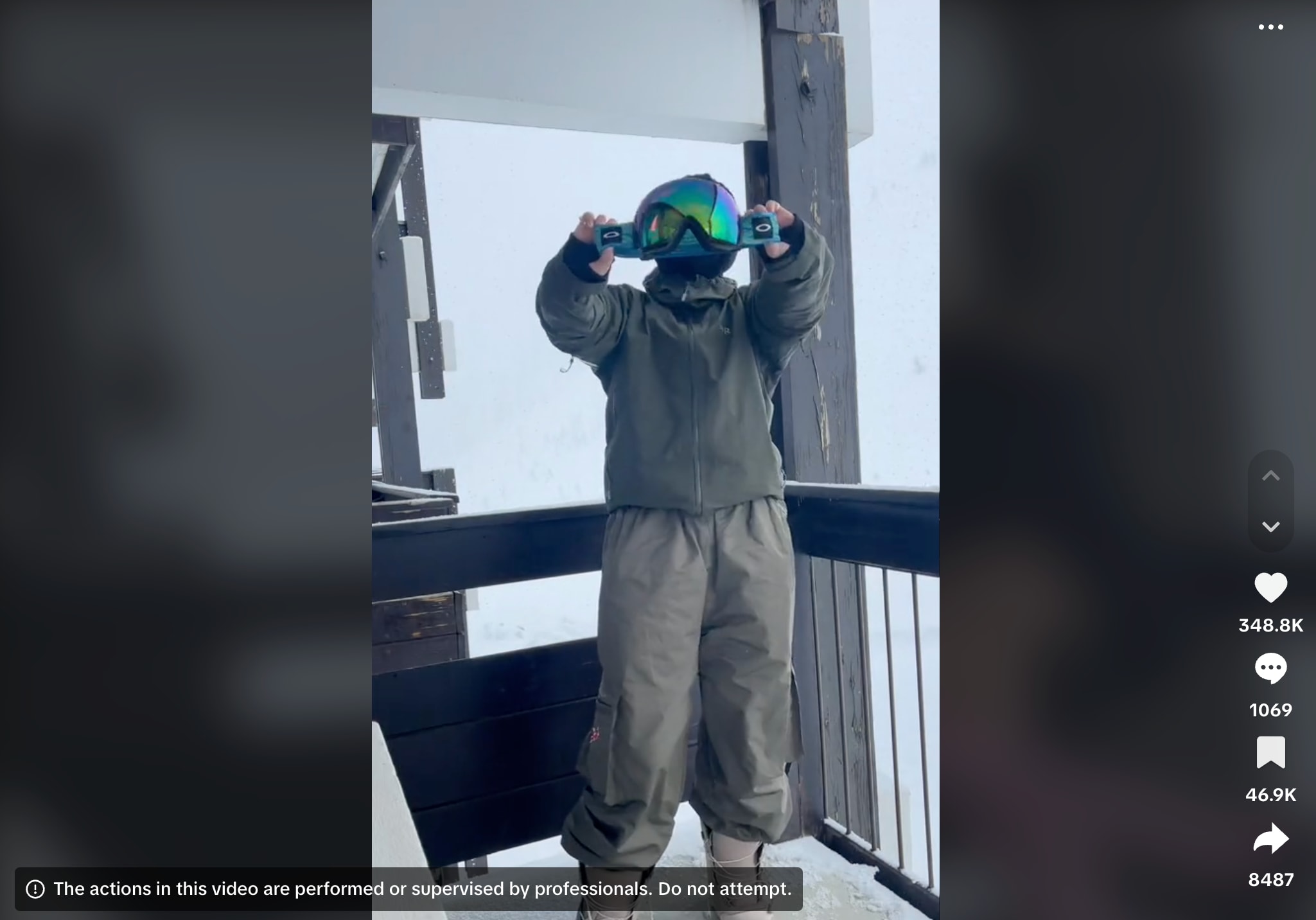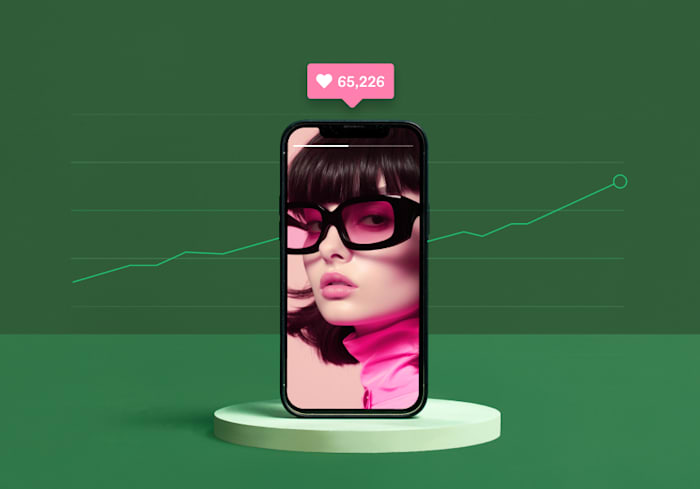The Best Structure for Short-Form Videos: A Guide to Creating Engaging Content
Want to know how and why short-form videos work? This guide covers the basics of short-form video to help you create engaging content.
 November 21, 2024
November 21, 2024 6 minute reading
6 minute reading
Short-form video has become one of the most popular types of content formats thanks to platforms like TikTok, Instagram Reels, and YouTube Shorts.
If you're a new content creator or small business owner looking to build a social media marketing strategy with short-form video, you may be wondering where to start.
In this guide, we'll cover the basics of the short-form video format to help you get a better understanding of what makes it great and why. This includes:
What is short-form video?
Why is short-form video content popular?
Short-form video structure.
Short-form video best practices.
Short-form video tools and resources.
Find a Short Video Expert for Hire
What is a short-form video?
Short-form video is a type of vertical video (9:16 aspect ratio) you watch on social media platforms. They are typically less than 10 minutes in length. But, according to the 500+ marketers HubSpot surveyed, 33% say 31–60 seconds is the optimal length.
Content creators design short-form videos to be attention-grabbing and shareable. To make shareable videos, creators need to make sure their content is on the best short-form video platforms, including:
Instagram Reels:
Instagram Reels are a feature of the Instagram platform. Instagram limits Reel clips to a total length of 3 minutes (including multiple shorter clips). Note: Reels are not the same as Instagram Stories.
Like other Instagram content features, you have access to various effects, filters, tagging, mentions, music, stickers, and text-to-speech when making Reels.
TikTok:
TikTok arguably created the short-form video trend as we know it today. It holds the top spot for average video views (18,173.32) compared to other short-form video platforms.
Compared to Instagram, TikTok encourages endless video scrolling on the "For You" page, while Instagram's Explore page is less interactive and does not include captions or account names.
TikTok's audience skews more towards Gen-Z than the other two platforms.
YouTube Shorts:
Like Instagram Reels, YouTube Shorts are a YouTube feature limited to 3 minutes of video.
Compared to the other two types of social media videos, YouTube Shorts are a better option if you want your Shorts to perform as teasers for other, long-form video content on your YouTube channel or to otherwise repurpose them.
Many other platforms have short-form video features, but these are the most popular globally.
Why is short-form video content popular?
Before we get into the details of short-form video structure and best practices, let's ask: why are short-form videos so popular? The answer comes down to the following factors.
1. Attention spans are shorter than ever
In a Speaking of Psychology podcast episode from the American Psychological Association, Dr. Gloria Mark discussed her attention research. She started measuring attention in 2004, and found that our ability to stay focused has decreased significantly since then:
"Back in 2004, we found the average attention span on any screen to be two and a half minutes. Throughout the years, it became shorter. So around 2012, we found it to be 75 seconds."
“[We found] this is with logging techniques…In the last five, six years, we found it to average about 47 seconds, and others have replicated this result within a few seconds."
The 47-second figure represents an average 68.7% decrease in attention span over 20 years.
With dwindling attention spans, eye-catching content that quickly engages our viewers has a better chance of widespread reach and building business or personal brand awareness.
2. Mobile-first content is on the rise
More people are using the internet on their phones than any other device. The October 2024 snapshot from Data Reportal suggests 61.64% of total web traffic comes from mobile devices.
As more people use the internet on mobile phones, it makes sense for creators and marketers to create more mobile-first content.
3. Algorithms favor short videos
Going back to the HubSpot marketer survey, short-form video is key to viral content. Almost half of marketers (47%) said short form video is the most likely to go viral, compared to Live videos at 15%.
Here's a look at some of the top-viewed TikTok videos of all time (as of October 2024) and their length:
Zach King's magic broomstick video: 2.3 billion views, 18 seconds long.
James Charles' Christmas wonderland transition: 1.7 billion views, 15 seconds long.
Zach King's glass and cake illusion video: over 967 million views, 11 seconds long.
Bella Poarch's "M to the B" lip sync video: over 844 million views, 10 seconds long.
Nyadollie's beauty makeup tutorial: over 513 million views, 29 seconds long.
In any top-viewed TikTok list, most videos are under one minute in video length. This information tells us shorter videos are more likely to be shared and boosted by the algorithm.
Short-form video structure
The magic of engaging video (besides creativity) is its structure. Humans are naturally drawn to story and structure—it's what helped evolve our brains over tens of thousands of years.
And, the "story" of good short-form videos follows a three-beat structure: the hook, the main content, and the call-to-action (CTA).
The hook
Since a short-form video is generally under a minute, your hook needs to grab attention within the first 5 or 6 seconds. I know from personal experience scrolling through TikTok how quickly I pass from one video to the next.
Here's a great hook example that grabs your attention and motivates you to keep watching:
In this Coiffeurstory video, the opening text reads, "A haircut that matches your personality?". The video features a hairstylist and their client discussing the haircut with background music. The hook lasts 3 seconds.
Why is this a great hook? It draws us in with questions like:
What haircut matches her personality?
Is the haircut going to be good?
What haircut would suit her?
The hook uses classic storytelling techniques that say a good story opening starts with change. The client, the subject of the story, is getting a haircut—an immediate change to her appearance.
The main content
Once you hook a viewer into the video, you've got to keep them there with engaging main content.
There are a lot of Reels, Shorts, or TikTok video ideas to play with, but the main content should deliver what you promised in your hook. The video does not need to be fancy, just engaging.
In the haircut video, for example, the main content shows the haircut as it's happening. A text overlay in the middle of the video gives us some context and keeps us interested until the end.
The video's total length is 30 seconds. So, taking away 3 seconds of hook leaves 27 seconds. Another 3 seconds rounds out the video, giving us about 24 seconds of main content.
This example follows the 80/20 rule. In other words, 80% of the video makes up the main content, and the other 20% of the video is the beginning and end.
The call-to-action (CTA)
The final part of the story is the call-to-action. What do you want viewers to do after watching your video?
For content creators, the CTA usually asks viewers to follow or subscribe. Businesses or influencers using TikTok or YouTube for promotion will often include a CTA that encourages people to check out a product or service. It’s smart to include a CTA in your video, description, or both to increase conversions on your short-form video marketing campaigns.
In the Coiffeurstory video example, there's no in-video CTA, but the brand asks viewers to check out the hair salon in Paris and save the video as "curly mod inspo" in the description.
Short-form video best practices
Knowing the structure of a good short-form video is not the only factor for success. Here are some additional best practices to help you increase engagement.
Keep it concise
The format is "short-form," so the advice to keep the video concise should not be a surprise.
While the most popular videos are generally under a minute, longer videos (like 3 minutes) can still be popular if the content is important, entertaining, or educational.
Use captions and text overlays
Even if your video is 10 seconds long, captions and text overlays help contextualize it and make it more accessible.
Plenty of folks watch videos without sound. In fact, Verizon found that 80% of consumers are more likely to watch an entire video with subtitles. Captioning your videos with relevant SEO keywords also has the extra benefit of improving your organic search results.
Use trending sounds, music, and effects
Using trending sounds and music can capture attention and boost your video’s engagement.
All of the short-form video platforms we talk about have "trending" pages for audio or sound effects. TikTok and Reels have trending visual effects, too. These pages display other videos using the same audio. If you get enough initial engagement, your video can rise to the top of these trending pages.
Incorporate storytelling
We talked about storytelling techniques earlier for building the structure of your video. In particular, we discussed using the hook to show change.
In storytelling, this change is called an "inciting incident"—it moves the reader or viewer deeper into the story by making us curious about what happens next.
But the most important aspect of storytelling is your character. So, for your short-form videos, decide who the character of your story is.
If you're a content creator, you're most likely the character, so make the viewer care about you and your story. If you're promoting a business, make the viewer the hero and your brand a helpful ally or mentor.
Ultimately, inspiring curiosity is key to drawing and keeping viewer attention. You can do this by writing a video script with an engaging inciting incident and interesting characters.
Use jump cuts
Beyond the content itself, the way you edit your video also matters. A jump cut is an editing technique that cuts one longer shot into shorter shots, making it look like the action has moved forward in time.
They’re different from fine cuts, which hide visual edits and keep continuity. Instead, they highlight change to create a reaction from the audience, like laughter, fright, or surprise.
You'll find plenty of short-form videos using jump cuts, especially in trending topics like "get ready with me."
Here's a quick example:
Encourage interaction
The last best practice is encouraging interaction. The basic form includes the CTA at the end of the video as a marketing strategy.
Other methods include asking your audience a question or inviting their opinions or advice. Videos on trending topics become popular because viewers share their opinions on them. Otherwise, you can ask viewers to create user-generated content (UGC) related to your video, using a hashtag to keep track of responses.
When more people engage with your video, the algorithm is more likely to recommend it to your target audience and improve your overall engagement rates.
Short-form video tools and resources
Now you know how to structure your short-form videos and understand best practices for success. But we can all still use a little help occasionally. Here are some video tools and resources you can use to make your videos even better.
Fiverr
If you find you don’t enjoy some parts of the content creation process, you can outsource the work by hiring talented freelancers to help with video marketing.
For example, many content creators find video editing difficult or time-consuming. But there are plenty of video editing services available on Fiverr to help you produce better short-form videos.
Remember, while the DIY road is possible, you can always find an extra pair of hands on Fiverr.
Descript or CapCut
If you prefer to edit videos yourself, Descript is a great tool. It lets you edit videos like a document, create templates for video and caption styles, and use AI to speed up the process.
If you're creating content on TikTok specifically, CapCut is another great option, as it's deeply integrated into the platform. With CapCut, you get access to TikTok's trending pages to use for new content and the usual video editing tools.
An AI LLM model like ChatGPT or Claude
Sometimes the well of inspiration runs dry. Even if you have looked through lists of short-form video trends and content ideas.
At that point, using an AI LLM model like ChatGPT or Claude can help you come up with new content based on your prompts. For example, I gave ChatGPT-4o Mini the following prompt:
"I'm a TikTok creator in the fantasy BookTok niche. I've already shared videos about my top 5 best/worst books, books I've read this year, and books on my TBR list. Can you give me a list of 5 short-form video ideas I can use to create new TikTok content?"
The ideas it gave were pretty interesting:
Fantasy book character showdown.
Cover design ratings.
Bookish aesthetics.
Favorite fantasy tropes.
Fantasy book recommendations based on mood.
Play around with your AI prompts, and you can get some interesting content marketing ideas that may inspire new ideas.
Hire a short-form video expert on Fiverr today
If your content strategy goals include short-form video, and you're new to the format, you could hit the ground running by hiring a short-form video expert from Fiverr today.
You can find expert help with video editing, video script writing, digital marketing, managing your content calendar, or the whole content creation process.
Otherwise, even if you're a seasoned content creator, delegating work you would rather not do can save you time and mental load. Remember, you do not have to go at it alone.
Short-form video FAQs
1. How do you structure short-form content?
The best short-form video structure follows the three-act story beat—the "hook" or "inciting incident," the main body or "journey," and the CTA or "resolution."
2. What is the best length for a short-form video?
According to a survey of 500+ marketing respondents, the best length for short-form video is 31–60 seconds.
3. How do you make good short videos?
Making good short-form videos comes with practice, but here is some advice to make okay videos great:
Keep it concise.
Use captions and text overlays.
Use trending sounds and music.
Incorporate storytelling.
Use jump cuts.
Encourage interaction.





